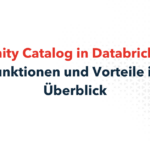Redefining the core product Key Performance Indicators (KPIs) has recently been undertaken, involving the review of outdated data models to track metrics such as depletion rate, quantity available, and total allocations. During this process, obsolete logic and antiquated datasets have been identified. When this situation arises, various team members are contacted in search of individuals with a comprehensive understanding of the rationale behind the original logic or dataset.
The lack of clarity regarding the appropriate point of contact when encountering a data asset presents a significant challenge for both the data team and business stakeholders. It necessitates extensive communication, often resulting in a cyclical process. Avoiding prolonged efforts to acquire straightforward answers to data-related inquiries is essential.
This highlights the significance of data asset ownership. The assignment or assumption of ownership can significantly streamline operations and minimize frustration throughout the organization.
What is Data Ownership?
Data ownership designates the specific individual or team to approach for queries regarding a data asset or requests for modifications. This approach minimizes the back-and-forth typically involved in locating a knowledgeable person. Ownership entails publicly attributing a data asset to a particular individual, signaling their comprehension of the asset’s business context or their technical proficiency. Such assignments are usually documented in a data catalog.
Why is Data Ownership Essential?
Data ownership holds substantial importance for three key reasons: data governance, improved collaboration across teams, and accountability. Let’s delve deeper into each of these aspects.
Data Governance
Data governance encompasses the accessibility, usability, and security of data. Ownership primarily addresses security and usability. When an owner is designated for data assets, they assume the responsibility of safeguarding the data’s integrity and ensuring its high quality. The asset’s owner may regulate access permissions, limiting access to specific teams as required. For instance, a dataset containing personally identifiable information (PII) like credit card numbers may only be accessible to the finance team. The owner would manage access and prevent unauthorized use.
Assigning ownership also promotes data usability. Regular monitoring and maintenance by assigned experts help prevent prolonged periods without updates. Distributed ownership among subject matter experts ensures assets remain secure and functional.
Enhanced Inter-Team Collaboration
Ownership obviates the need for extensive communication to locate individuals with in-depth knowledge of a particular asset. The asset’s designated owner facilitates direct communication, streamlining interactions.
Accountability
The bystander effect, prevalent in business, can lead to oversight of problems when assuming others are addressing them. Absence of ownership can result in data quality issues, such as outdated logic, unrefreshed data pipelines, and duplicates. Assigning ownership designates a responsible party for asset upkeep, eliminating ambiguity regarding maintenance responsibilities.
Implementing Ownership
Implementing ownership effectively involves several steps:
- Compile a comprehensive list of data assets, encompassing data sources, models, and dashboards.
- Categorize assets by business domain to identify potential asset owners.
- Determine asset experts, considering both business context and dataset design.
- Consider utilizing a data catalog or Modern DataOps Cloud platform with built-in ownership features.
- Adopt a system that supports ownership, such as a data catalog or Modern DataOps Cloud.
- Prioritize data ownership to enhance data quality, productivity, and collaboration.
In conclusion, prioritizing data ownership yields superior data quality, efficient resource allocation, and improved collaboration among teams. Reflecting on the earlier scenario, if asset owners had been designated for the product datasets, the process of obtaining essential insights and crafting new datasets would have been considerably expedited, saving valuable time and effort.
Source: y42






